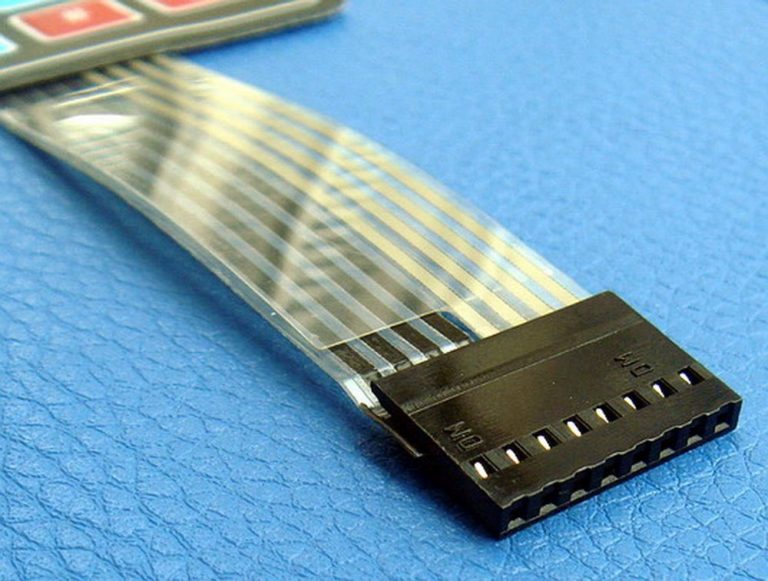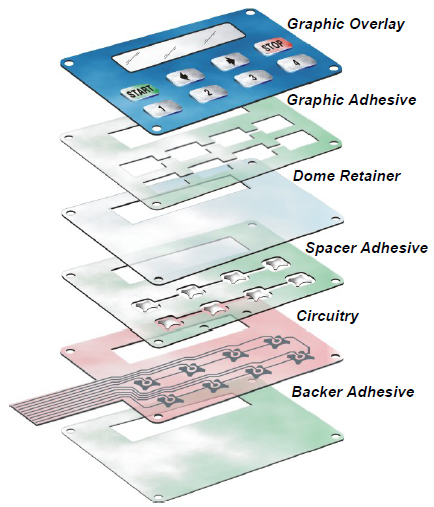Choosing the right membrane switch manufacturer can positively impact your product's quality.
Choosing the right membrane switch manufacturer can positively impact your product's quality.
Blog Article
Everything About Membrane Switch: Comprehending Its Layout and Functionality
When you assume about the control user interfaces in modern-day tools, membrane switches frequently come to mind. Let's explore what sets membrane layer switches apart from other control systems.
What Are Membrane Buttons?

Membrane buttons can likewise be personalized relating to shape, size, and graphics, enabling suppliers to create special interfaces tailored to details items. In general, membrane buttons play a significant function in boosting individual experience across a large variety of applications.
Exactly How Membrane Layer Switches Over Job
When you push a trick on a membrane layer switch, it turns on an uncomplicated yet efficient system. The leading layer, frequently constructed from adaptable material, presses down onto a conductive layer below it. This activity bridges the void in between conductive traces, completing an electrical circuit. As quickly as the circuit shuts, it sends out a signal to the tool's controller, which translates your input.
You'll discover that the responsive comments differs based upon the switch design, supplying either a soft click or a more noticable action. Once you launch the trick, the membrane layer go back to its original placement, resuming the circuit and stopping the signal. This process takes place almost instantaneously, guaranteeing a receptive individual experience.
Membrane layer switches are preferred as a result of their resilience and resistance to dust and wetness, making them suitable for numerous applications, from home devices to medical gadgets. Comprehending this procedure helps you appreciate their prevalent use.
Secret Components of Membrane Buttons
Comprehending the crucial elements of membrane switches is essential for realizing their performance and layout. At the core, you'll find the visuals overlay, which offers the visual interface for individuals. Under that, there's a spacer layer that separates the circuit layers, ensuring that they do not make contact up until pushed. The circuit layer is where the magic takes place; it includes conductive traces that finish the circuit when you push the switch. Another necessary element is the adhesive support, enabling the button to abide by surface areas firmly. Ultimately, the protective layer guards versus environmental factors and put on, prolonging the switch's lifespan. Each component plays a substantial role in making sure trusted efficiency and individual interaction. By recognizing these elements, you'll get insight right into exactly how membrane layer switches over operate and their significance in different applications.
Products Made Use Of in Membrane Switch Style
The efficiency and resilience of membrane switches over greatly rely on the products made use of in their layout. You normally come across polyester and polycarbonate as key substratums due to their outstanding toughness and versatility. These products stand up to scrapes and chemicals, making them suitable for demanding atmospheres.
The conductive layers usually make use of silver or carbon, chosen for their integrity and conductivity. membrane switch manufacturer. Silver supplies premium efficiency, while carbon is a cost-effective option. For the overlay, you may take into consideration a matte or shiny coating, depending upon your visual requirements and user experience
Adhesives play an essential role too; they bond layers firmly and ensure long life. Make specific to choose adhesives that stand up to environmental factors like temperature and humidity. Lastly, don't overlook the importance of an excellent printing method for graphics, as it enhances both performance and aesthetic allure. Picking the ideal materials will ensure your membrane layer switch stands the test of time.
Design Factors To Consider for Membrane Buttons
While making membrane switches, it's important to take into account different variables that affect their capability and customer experience. Begin by concentrating on the format and switch size; make specific they're user-friendly and easy to navigate. Consider the tactile feedback you intend to provide-- will customers need a recognizable click or a softer touch? Furthermore, believe concerning the materials you'll use, as they'll impact toughness and visual appeals.
Do not forget the graphic style; clear labeling and color comparison are considerable for visibility. Verify your layout suits ecological factors, like wetness or temperature variants, which might affect performance. Lastly, bear in mind the significance of testing prototypes with actual customers to gather comments and make necessary changes. This repetitive process assists you improve the design, verifying it meets both practical and aesthetic requirements efficiently. By thoroughly considering these components, you'll produce a membrane button that improves use and satisfaction.
Applications of Membrane Switches
Membrane layer buttons are flexible parts discovered in different applications, from commercial tools to customer electronics. You'll see their influence in devices that call for resilient interfaces and in devices that take advantage of smooth designs. Understanding these applications helps you appreciate the functionality and functionality of click resources membrane buttons in day-to-day technology.
Industrial Equipment Use
When you're looking to boost the functionality of commercial equipment, membrane buttons provide a reliable service that incorporates resilience with easy to use style. These switches are perfect for harsh environments, providing resistance to dust, wetness, and chemicals. Embrace membrane switches to improve your procedures and enhance overall efficiency.
Consumer Electronic Devices Assimilation
In the domain of consumer electronic devices, membrane switches play an essential function in improving user communication and tool functionality. Membrane switches additionally guarantee longevity and resistance to dirt and dampness, prolonging the life expectancy of your electronics. By selecting membrane layer switches, you enhance not just the performance however likewise the design of your devices, making day-to-day interactions smooth and pleasurable.
Advantages and Negative Aspects of Membrane Buttons
While membrane layer buttons offer a variety of benefits, they additionally include some downsides that you must take into consideration. One considerable benefit is their small style, making them ideal for space-constrained applications. They're additionally cost-effective, giving a resilient remedy with a reduced production cost. Furthermore, their seamless surface Discover More Here is simple to tidy, improving hygiene in settings like health centers.

Membrane buttons can have a much shorter lifespan contrasted to mechanical buttons, specifically under heavy usage. They can additionally be much less responsive, which may influence customer feedback throughout procedure. Balancing these pros and cons will assist you figure out if membrane layer switches are the ideal fit for your project.
Regularly Asked Questions
How Lengthy Do Membrane Switches Normally Last?
Membrane switches over normally last between 5 to one decade, depending upon use and ecological problems. You'll wish to examine factors like wear, direct exposure to dampness, and temperature level variations to determine their long life efficiently.
Can Membrane Layer Switches Be Personalized for Specific Styles?
Yes, you can personalize membrane switches to fit certain designs (membrane switch manufacturer). You'll have the flexibility to pick colors, forms, and designs that match your task's requirements, guaranteeing they mix effortlessly with your general visual
What Is the Price Range for Membrane Layer Switch Manufacturing?
The cost range for membrane layer switch manufacturing typically falls in between $1 and $10 per system, depending upon elements like style intricacy, amount, and materials. you can try here You can get quotes from manufacturers to discover the finest choice.

Are Membrane Switches Waterproof or Immune?
Membrane buttons can be designed to be waterproof or immune, depending upon products utilized and building and construction methods. If you need them for damp environments, guarantee you specify those needs during the layout process.
How Do Membrane Layer Changes Contrast to Conventional Buttons?
Membrane layer buttons are usually thinner and extra adaptable than standard switches, using a smooth style. They're usually much easier to clean and integrate, however might not give the tactile comments you're utilized to with mechanical choices.
Final thought

Report this page